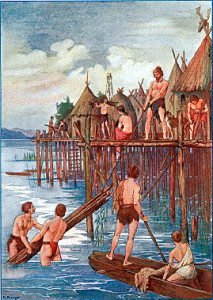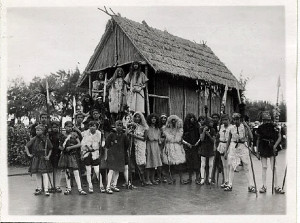By Renata Huber, Eda Gross
Amt für Denkmalpflege und Archäologie, Direktion des Innern

ABSTRACT:Â Zug takes its name from an old term for hauling in fishing nets (zuc). Current research underlines the significance of the use of wetland resources at several sites from at least the Neolithic onwards. The excellent preservation conditions at wetland sites allow us to make a distinction between various patterns of resource management at different sites. The abundance and composition of the recorded finds (including animal and plant remains) seem to vary depending on the location, function, and seasonality of each individual site.
At Cham-Eslen, around 4000 BC, a single building on a shallow seems to have been used predominantly for fishing, as we can tell from the discovery of fishing gear and a large amount of fish bones. Trans-disciplinary studies carried out on a large bone midden and its overlying loam layers at the site of Zug-Riedmatt (around 3200 BC) revealed evidence of seasonally differentiated subsistence activities including intense red deer hunting, fishing, gathering, and processing of different wetland species in and around the river delta and lakeshore. The Roman mill at Cham-Hagendorn – preserved in an abandoned riverbed – gives us a glimpse of the use of a watercourse as a source of energy. Finally, a recent excavation in a silted-up small lake called “Bibersee†(beaver lake) yielded a very rich assemblage of fishing gear (traps, fences, a dugout) from the Middle Ages, which fit in well with the site of Steinhausen-Sumpfstrasse West.
When tracing backwaters and wetlands in pre-industrial Canton Zug, a variety of waterscapes emerge. Lakes, deltas, riparian zones, rivers and swamps of different sizes cover a large area of Canton Zug and paint a picture of abundant food resources as well as transport and communication routes and energy sources over the course of time.
To see Renata Huber and Eda Gross’ WARP30 PowerPoint click here:Â Breaking Waterlogged Ground from the Waterscapes of Canton Zug, Switzerland












